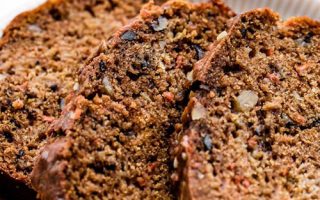 The quilt top completed, I was off to the store to pick out a fabric for its back. Almost immediately I found the perfect print… lush lime-colored leaves, fuchsia flowers, rosy rosettes and beautiful butterflies against a charming blue backdrop. Approaching the cutting counter, I spread out the quilt top to determine how much yardage was needed.
The quilt top completed, I was off to the store to pick out a fabric for its back. Almost immediately I found the perfect print… lush lime-colored leaves, fuchsia flowers, rosy rosettes and beautiful butterflies against a charming blue backdrop. Approaching the cutting counter, I spread out the quilt top to determine how much yardage was needed.
Now, if any of you have been to the fabric store, you probably know how curious some of the workers can be…especially if they have an enthusiastic thread for sewing woven into the fabric of their soul. The person behind the cutting counter was just this type, her sister taught quilting classes and she was excited to see the quilt top. A few minutes of fun followed as she identified multiple motifs she recognized as belonging to their store. She then turned the quilt top over to examine the seams with an interest only seamstresses share.
Now, I must admit, I was very proud of this ‘underneath’ side…each tiny, little seam had been carefully pressed open so it would lay flat. Diagonal seams, cross seams, long seams, short seams…it had been a tedious task and many a time I had considered, while laboring away with the hot, steamy iron, how much easier it would be not to press them at all. But the words of experience from my grandmother rang disapprovingly in my ears and I had pressed on.
The result? 434 beautiful seams…each perfectly pressed and now proudly presented. It was these 434 fine seams that made the woman query: “Why did you press them open?” Not awaiting an answer, she explained that when quilting, unlike sewing clothes, one is never to press the seams open. Instead, quilt seams should be pressed to the side to make them stronger and the quilt last longer. As she proceeded to cut the cloth, she gave me some more helpful “do’s and don’ts” about quilting, wrote out my ticket and wished me luck.
This trip to the fabric store has brought some interesting observations and reflections to mind. It is somewhat ruefully that I’ve recalled those monotonous minutes spent steaming seams. I did the best I knew, convinced that the extra time and labor would result in a good, sturdy quilt. Yet, it did not; on the contrary the easier, quicker way would have been better.
This brings up another interesting point…How many times have we settled on doing things a harder way just because we felt that the difficultly of it must make it better? Sometimes the harder way is the better way, but basing our decision on this fact alone is not always an accurate measurement.
Understanding the Why, not just the How, will help us determine the ‘best’ way. Knowing what we want as the end result will also aid us in this decision. And sometimes, there is no ‘better’ way because sometimes it doesn’t really matter.
With the fabric on the back of the quilt I’m now in the midst of quilting, which I have chosen to do by hand. Having machine quilted several quilts in the past, I can tell you (if you have any doubts) that hand quilting is much, MUCH slower than machine quilting. But since the quilt doesn’t need to be completed soon, and I really want the unique look so characteristic to hand quilting, the decision was easy to make. That’s why I chose the more difficult way… not because it was harder or better. This is an example of where there is no ‘right’ or ‘wrong’ way. Each way will produce a different outcome…sometimes it just comes down to personal preference. –By Anna McFie



